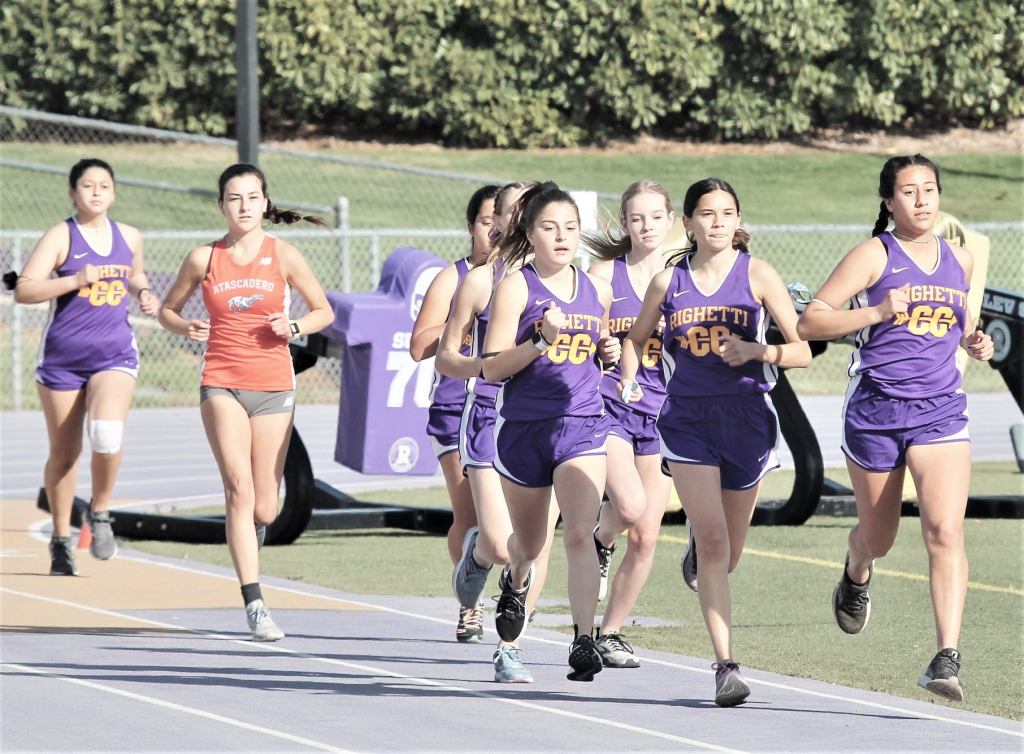Stefanos Tsitsipas has been the talk of the town since he debuted on the ATP Tour in 2016. The 18-year-old from Greece is not only one of the youngest players on the ATP Tour, he won the final of the junior Wimbledon in 2015 and has since gone one to four in grand slam finals. Tsitsipas, ranked number 137 in the world, has been a consistent factor on tour ever since, making the quarterfinals of the Australian Open in 2017, the semifinals of the Wimbledon in 2018, and the finals of the Australian Open in 2019.
Stefanos Tsitsipas, the youngest player in the top 25 of the ATP rankings, has risen up the rankings at lightning speed, from being the world’s No. 57 in July 2017 to No. 3 in January 2018, and from there to No. 6 in March 2018. He’s had several notable wins since then, including an upset win over world No. 1 Rafael Nadal in Indian Wells, and then at Rome, Tsitsipas earned the biggest win of his career, defeating world No. 3 Alexander Zverev in a match that lasted five sets.
The 21-year-old Greek is a top ATP player currently ranked No. 76, but he could be one of tennis’ stars in 2021.. Read more about french open 2021 and let us know what you think.As he approaches his 23rd birthday in August, Stefanos Tsitsipas has already achieved more than most tennis players ever will: seven career titles (including the 2019 ATP Finals and the 2021 Monte Carlo Masters, his first 1000-level win), three Grand Slam semifinal appearances. Entering the French Open, he had won 25 matches in his first 14 Slams, only one behind where Roger Federer was through 14, with the same number of first-round exits and more trips to the quarterfinals or later (three to young Federer’s two). The Fed similarities don’t end there. Tsitsipas has one of the most dominant serves on tour, a one-handed backhand and a forehand that creates sharp angles out of nowhere. (His flowing locks are better than anything Federer could have dreamed of, as well.) He has flashed enough upside in his young career that long ago — perhaps right around the time he was knocking Federer, the two-time defending champion, out of the 2019 Australian Open — we began wondering if or when he might force his way into the sport’s ruling class. We wonder that about a lot of players, of course. Hell, we wondered it once of Federer himself — the eventual 20-time Slam champion had been a frustration, eliminated before the quarterfinals in seven consecutive Slams before finally breaking through at Wimbledon in 2003. Sometimes the breakthroughs never happen, but after making the semis in both October’s French Open and January’s Australian Open, then enjoying a ferocious clay-court season this spring, Tsitsipas might be making his move. And if he can maintain his recent form, the draw he was given in Paris could produce his strongest Slam performance yet.
You never know if or when a player with potential will break through
Sometimes it happens before you even know to anticipate it. Eighteen-year-old Rafael Nadal was ranked 51st in the world at the end of 2004, then surged, reaching the fourth round at the Australian Open, taking Federer to five sets in the finals at Miami, entering his first French Open as the No. 4 seed and dropping only three sets on his way to the title. His draw wasn’t particularly easy — he had to beat former semifinalist Sebastian Grosjean, future finalist David Ferrer and future champion Federer on his way to the final. He would win the next three tournaments at Roland Garros as well before eventually finding success on other surfaces. 2 Related Sometimes, however, your breakthrough requires fortuitous circumstances. Dominic Thiem won his first Slam title at a 2020 US Open in which Nadal opted out, Federer was out injured and Novak Djokovic had been disqualified in the fourth round. And Federer’s own first Slam win included some breaks. The 2003 Wimbledon Championships were taking place without seven-time champion Pete Sampras, 2001 champion Goran Ivanisevic or two-time recent finalist Patrick Rafter, all of whom had retired within the previous year. Defending champion Lleyton Hewitt lost in the first round to a young Ivo Karlovic as well, and No. 2 seed Andre Agassi lost in the fourth round to veteran Mark Philippoussis. The draw was wide open for Federer, especially after burgeoning nemesis David Nalbandian, who had beaten Federer in five sets at the Australian Open and would beat him again at the U.S. Open, fell to Tim Henman in the fourth round. Federer blazed through four unseeded players and dropped only one set on his way to a semifinal battle with Andy Roddick. That gave him all the confidence he required: He beat both Roddick and Philippoussis in straight sets and lifted the Gentlemen’s Singles Trophy for the first of eight times. Stefanos Tsitsipas is trying to follow in Rafael Nadal’s footsteps and have his breakthrough tournament at Roland Garros. Cameron Spencer/Getty Images It’s hard to look at Tsitsipas’ French Open draw and not get 2003 Wimbledon vibes. Granted, all of tennis’ Big Three — Federer, Nadal, Djokovic — remain in the field, so it’s not a full-on Thiem or 2003 Fed situation. But all of these grand champions are in the top half of the draw. Roland Garros’ inexplicable policy of using overall ATP rankings for its seeds meant that the greatest clay-court player ever (Nadal) got the No. 3 seed behind a player who entered this week 0-4 lifetime in the French Open (No. 2 Daniil Medvedev). Nadal landed the No. 1 seed in Djokovic’s side of the draw, and Tsitsipas, the No. 5 seed and probably the third-best clay-courter on the planet, landed in Medvedev’s half. When Thiem, a two-time French Open finalist who has been battling knee issues, was eliminated by Pablo Andujar in the first round, it opened up Tsitsipas’ draw even more. Tennis Abstract currently gives him a 58% chance of reaching what would be his third straight Slam semifinal, a 38% chance of reaching the final and a 19% chance of winning the whole thing, the third-best title odds behind, of course, Nadal (30%) and Djokovic (23%). Federer’s first junior-circuit breakthrough came when he won the 1998 Wimbledon junior title, so it made sense when his first Slam also came on grass. Tsitsipas’ first challenger-level title and Slam qualification, meanwhile, were both on clay, and he has seen extended success on the surface of late. Granted, with Nadal’s continued dominance, clay might be the worst surface for snaring your first Slam title, but Tsitsipas might have as good a chance as anyone. “I really like playing in Paris,” he said on court after his second-round win. “I feel like the fans have embraced me and made me one of them. … My tennis is there, my performance is there, and I’m able to deliver not just good tennis but also create a good atmosphere on this court.” Heading into the French Open, he was 25-6 on clay over the past 52 weeks. He won in Monte Carlo and Lyon and reached the finals in Hamburg and Barcelona, where he took Nadal to 7-5 in the third set, and two of his other five losses were to Djokovic (including another 7-5 third-setter). Among those who have played at least 10 matches on clay in the past year, only ninth-seeded Matteo Berrettini is winning more points on his serve or holding a higher percentage of the time than Tsitsipas, and only Nadal is winning a higher percentage of sets. “I’ve had good weeks this year,” he said, “I’ve had some good results … I don’t see my performance so far as super excellent and outstanding, but I’ve been consistent.” In his second-round win over Pedro Martinez, Tsitsipas’ serve wasn’t at its sharpest — he was broken four times, twice in the final set — but his return more than made up for it. A merely good returner on average, he’s broken serve 13 times in his first two matches, and his biggest opposition to date has come from Wednesday’s chair umpire, with whom he argued about the placement of his bag. Is all this enough to not only reach the finals in Paris but, once there, take down an all-time great to win the tournament? We’ll see. Winning seven matches in a row is hard, and even with a friendly draw, Tsitsipas will still have to get past big-serving John Isner (who also hasn’t dropped a set yet) on Friday, plus maybe two-time French Open quarterfinalist Pablo Carreno Busta, two-time Slam finalist Medvedev and US Open finalist Alexander Zverev just to get to a potential finals matchup with Nadal or Djokovic. But on clay, he’s better than all of those players on average. The opportunity is there, and he’s shown plenty of signs that he’s ready to seize it.Having won his first ATP Tour title at the 2018 Australian Open and having already beaten the world’s top-100 in the past, 21-year-old Greek tennis prodigy Stefanos Tsitsipas has become the talk of the tennis world in the lead up to the Australian Open. But this year, Tsitsipas could be making his move into tennis’ elite at the 2021 French Open.. Read more about nadal french open 2021 and let us know what you think.
Frequently Asked Questions
Is Federer playing French Open 2021?
After a year of being one of the best players in the world, it’s clear that Roger Federer is hitting his best form right now. He’s playing some of the best tennis of his career, and he seems to have rediscovered the joy of the game. He seems to be in great shape and focused on performing at the highest level. On the other hand, he is 41 years old and a quarter of the way through his best season. The French Open is the second major of the tennis season, and the first Grand Slam tournament of the year. While Roger Federer is the only man to win the French Open seven times, the field is littered with talented players, who will compete to be the first to take home the trophy. Steffano Tsitsipas, who was the Argentinian number one prior to the start of the year, is one such player, and an exciting prospect for the future.
Who is the only player to win French Open 8 times?
Tennis is a sport of small margins, and this is especially true at the French Open. There is no asterisk attached to the tournament that indicates it is anything other than the best on the planet. The French Open has been won by an underdog in 11 of the last 13 years. Tennis superstar, Novak Djokovic, is considered by many to be one of the greatest tennis players of all time. He won the 2011, 2012, 2013, 2014, 2015, 2016, 2018, and 2019 Australian Opens, as well as the 2007, 2008, 2011, 2013, 2014, 2015, 2016, 2017, and 2018 French Opens, along with Wimbledon five times and the US Open twice.
Who is the youngest player to win the French Open tennis?
Tennis’ most prestigious event, the French Open, is just around the corner, and there’s always someone younger than 18 who breaks through to win the competition. Here’s the youngest player to ever take home the title of French Open Champion. There are some things in life that are just made for one person. For example: the first-ever French Open women’s singles final. The first French Open women’s singles final is one of the most impressive feats in tennis history. That’s because it is the first time a player under the age of 20 has taken on the titans of the sport at one of the most prestigious tournaments on the calendar. But that was then, and this is now.
Related Tags:
french open 2021stefanos tsitsipas predictionstefanos tsitsipas vs john isnernadal french open 2021french open drawroger federer,People also search for,Feedback,Privacy settings,How Search works,french open 2021,stefanos tsitsipas prediction,stefanos tsitsipas vs john isner,nadal french open 2021,stefanos tsitsipas vs john isner prediction,french open draw,roger federer,medvedev





